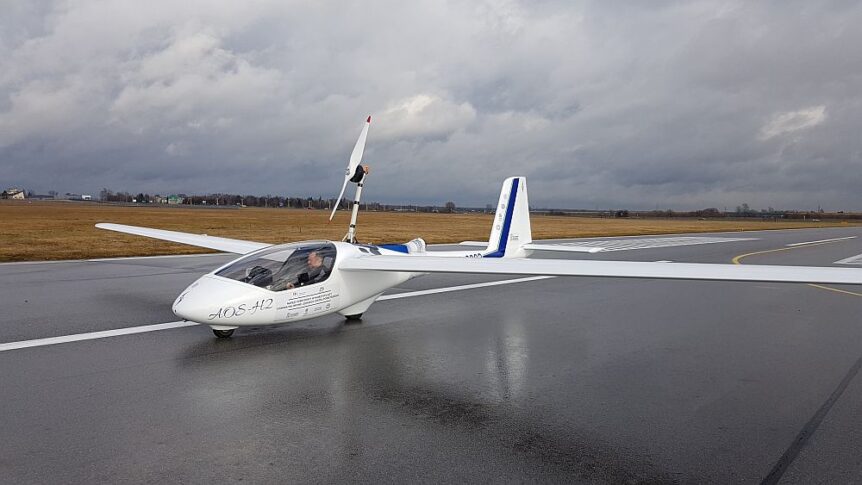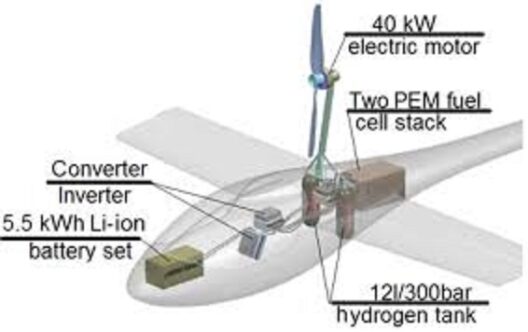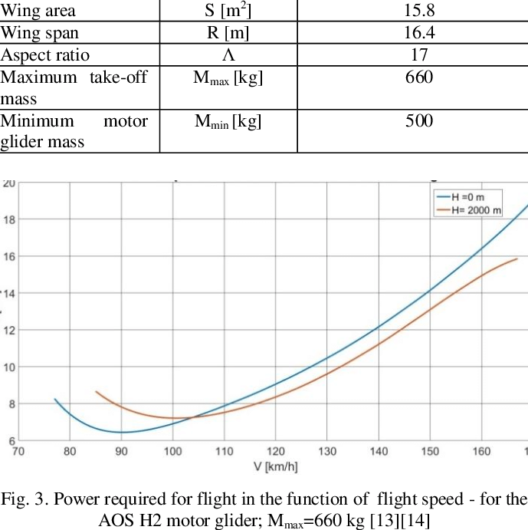A university in Poland has conceived, built and tested – but not flown, the AOS-H2, a hydrogen-powered motor glider.
In 2013, the blog covered the test flights of a battery-powered electric two-seat motorglider designed at the Warsaw (Poland) University of Technology. Now, a similar design, the AOS-H2 has been crafted to fly on power generated by a hydrogen fuel cell. Early tests in 2020, “Confirmed that all units work correctly.”
The “Hybrid Propulsion System Based on Hydrogen Fuel Cells in a Light Aircraft” is funded under the “Applied Research III” Program by the National Centre for Research and Development. Professor Marek Orkisz Ph.D., D. Sc., Eng. Of the Rzeszów University of Technology is Program Manager.
As noted in the University’s announcement of the new airplane in 2020, “The last completed project was the AOS-71 motor glider fitted with an electric-powered propulsion system integrated in the fuselage and powered by lithium-polymer batteries in the wings.”
At that time, Mike Friend, former Technology Director for Boeing, was on hand to observe the new machine. He had overseen the development of the first hydrogen fuel-cell powered craft in 2006, and the modified Diamond HK-36 was a starting point which helped encourage Boeing to move onto more such projects, as shown in this 2015 film.
The University has a history of glider and sailplane design, and soon after the AOS-71’s success, began design of a hydrogen-powered motor glider. This may have been inspired by Mike Friend’s visit.
In 2020, the AOS-H2 hybrid hydrogen motorglider went through field tests, including taxiing and runup on the runway at the Jasionka Airport. Researchers completed a report on their findings and that was published in 2021 in the journal Energies. Titled, “Energy Conversion System and Control of Fuel-Cell and Battery-Based Hybrid Drive for Light Aircraft,” it detailed the ground tests of the fuel-cell/battery hybrid propulsion system. Because flight tests were not allowed, all tests were limited to ground runs in 5° Celsius (41° Fahrenheit) weather. Researchers explain, “Unfortunately, due to the lack of national rules related to hydrogen use in manned flying platforms, full flight tests were not permitted.”
The important word here seems to be “hybrid.” A 10 kW fuel cell system maintains horizontal flight without the use of a battery. Two Horizon H-5000 five kilowatt stacks are “adapted to the airframe.” Each air-cooled stack weighs 30 kilograms (66 pounds) with fan and casing, and (deep breath here) costs $26,500. Each stack generates 70 Amps at 72Volts: The pair are designed to provide sufficient power for level flight.
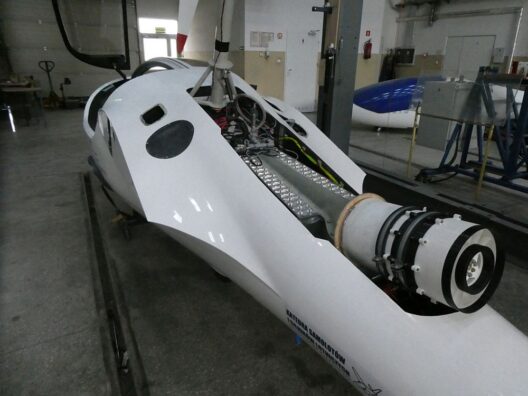
Horizon fuel cells provide 10 kW total power. Photo: Wojciech Frączek, MSc, Eng., WUT Faculty of Power and Aeronautical Engineering
The two fuel cells are connected to a battery pack by a CAN (Controller Area Network) bus, which also enables adding all support equipment and instrumentation. Major power comes from the batteries, 96 Kokam cells weighing 65 kilograms (143.3 pounds) with a nominal 5.5 kilowatt-hours energy storage. Take off and climbing requires boosting the fuel cells with the batteries. A mission profile, although never flown, was calculated to look like this:
• Start-up of the power system (0-30s) – 30 seconds ramp used
• Taking-off of the motor glider (30-60s) – maximum mechanical power 37kW
• Climbing (60-330s) – mechanical power equal to 33kW
• Horizontal flight (15 min.) – mechanical power equal to 9kW
• Maneuvering before landing (1 min.) – optional
• Landing
Researchers explain the hand-offs thus: “Taking into account that the fuel cell system is designed for the power range needed to obtain safe horizontal flight, during any other state requiring higher power (e.g., during climbing or maneuvering), the battery set providing boosting energy has to be used.” Total output of the hybrid power system is 40 kW, with two 12-liter tanks of 300 bar (4,351 pounds per square inch) compressed hydrogen providing 60 minutes duration.
Maintaining power for climbs, cruise and descent takes a power source and motor controller collaboration that requires a sophisticated electronic linkage.
Fuel cells, hydrogen tanks and folding motor pylon are all neatly encapsulated in the fuselage, although the overall package extends beyond the glider’s fuselage. Volumetric efficiency is not as tidy as battery packs within the aerodynamic shape.
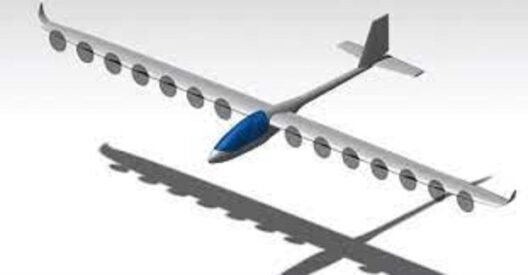
Potential changes may include removing retractable Emrax motor and substituting eight smaller motors along wing
Even though regulations prevent flight so far, a great deal of valuable data has been accumulated, useful for any others seeking understanding of the challenges involved. Future plans may include a distributed power system using multiple small motors.

